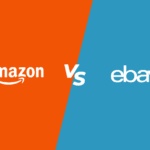Amazon vs eBay: Which One is Better for Your Business?

The online marketplace has become an essential platform for businesses to reach out to customers worldwide. With the rising demand for online shopping, businesses must choose the right platform to sell their products. Amazon and eBay are two of the most popular online marketplaces available today. Both platforms offer unique advantages and disadvantages, making it essential to choose the one that best fits your business needs. In this article, we will compare Amazon and eBay to help you make an informed decision.
The Basics of Amazon and eBay
Amazon and eBay are two different online marketplaces that offer various products, including electronics, clothing, home appliances, and more. Amazon, launched in 1994, is the world’s largest online retailer. It offers products directly from its warehouses, third-party sellers, and also allows businesses to sell on the platform. Amazon has a vast customer base and a highly developed distribution network, which makes it a preferred choice for many businesses.
On the other hand, eBay, launched in 1995, is an online auction and shopping website that allows businesses and individuals to sell products. eBay offers both new and used products, and customers can purchase items through auctions or fixed-price sales. eBay’s popularity lies in its bidding system, which allows customers to bid on products and buy them at a lower price.
Selling on Amazon vs. eBay
When it comes to selling on Amazon, the platform offers various options, including selling as an individual or a professional. Selling as an individual requires a lower monthly subscription fee but comes with additional fees per item sold. Selling as a professional requires a higher monthly subscription fee, but it eliminates the additional fees per item sold. Amazon’s fulfillment service, Fulfillment by Amazon (FBA), is an excellent option for businesses as it takes care of storage, packaging, and shipping of products.
eBay, on the other hand, offers a more straightforward process for businesses to sell their products. Businesses can list their products on the platform and sell them either through auctions or fixed-price sales. eBay also offers a Global Shipping Program that handles international shipping for businesses.
Fees and Commissions

When selling on Amazon, businesses must pay a referral fee and a variable closing fee, depending on the product category. These fees can range from 6% to 45% of the product’s selling price, depending on the product category and the price of the product.
eBay charges a fee for listing items, which can range from free to $0.35 per listing. eBay also charges a final value fee, which ranges from 4% to 10% of the product’s final selling price, depending on the product category.
Traffic and Customer Base
Amazon has a vast customer base, with over 200 million active customers worldwide. This massive customer base makes it easier for businesses to reach out to potential customers and sell their products. Amazon’s search engine optimization (SEO) is also highly developed, making it easier for customers to find the products they are looking for.
eBay has over 185 million active users worldwide and is a preferred choice for customers looking for unique or hard-to-find products. eBay’s bidding system also attracts customers who are looking to buy products at a lower price.
Branding and Marketing
Amazon offers businesses various advertising options, including sponsored products, sponsored brands, and display ads. These options allow businesses to increase their visibility on the platform and reach out to potential customers. Amazon’s advertising options are highly developed and can help businesses increase their sales.
eBay offers fewer advertising options compared to Amazon but allows businesses to promote their listings through promoted listings and eBay stores. eBay stores allow businesses to create a customized storefront that showcases their products.
Customer Service and Support
Amazon’s customer service is highly developed and offers various customer support options, including email, phone, and live chat. Amazon’s customer service team is known for its fast response times and excellent problem-solving skills.
eBay also offers customer support options, including email and phone support. However, eBay’s customer support is not as comprehensive as Amazon’s, and customers may experience longer wait times.
Trust and Security
Amazon and eBay both offer trust and security features to protect customers and businesses. Amazon’s A-to-z Guarantee protects customers from fraudulent sellers, and Amazon also offers the Amazon Transparency Program, which ensures that products are genuine and not counterfeit.
eBay offers the eBay Money Back Guarantee, which protects customers from fraudulent sellers and ensures that they receive a refund if the product is not as described. eBay also has a Seller Protection Program that protects businesses from fraudulent buyers.
Which One is Better for Your Business?
Choosing between Amazon and eBay depends on your business needs and goals. If you are looking to sell new products on a platform with a vast customer base, Amazon may be the better choice. Amazon’s fulfillment service, FBA, also makes it easier for businesses to handle storage, packaging, and shipping of products.
If you are looking to sell unique or hard-to-find products or want to sell products through auctions, eBay may be the better choice. eBay’s bidding system and lower fees make it an attractive option for businesses looking to sell products at a lower price.
Final Thoughts
In conclusion, both Amazon and eBay offer unique advantages and disadvantages, making it essential to choose the one that best fits your business needs. Amazon’s vast customer base and highly developed distribution network make it a preferred choice for many businesses, while eBay’s bidding system and lower fees make it an attractive option for businesses looking to sell products at a lower price. It’s important to weigh the pros and cons of both platforms before making a decision, and remember to choose the platform that aligns with your business goals and objectives.



